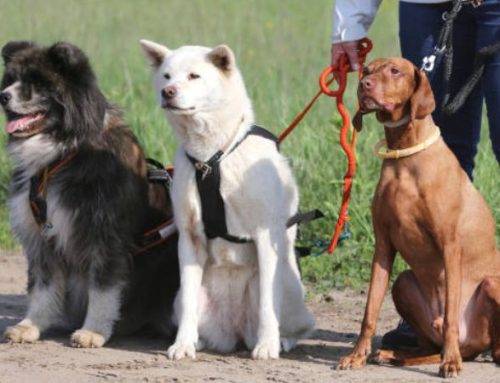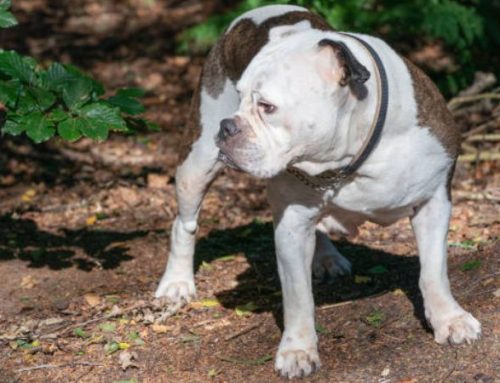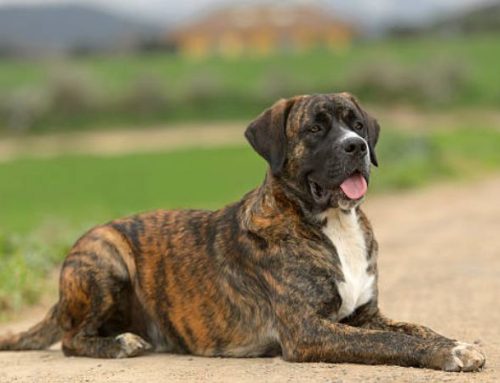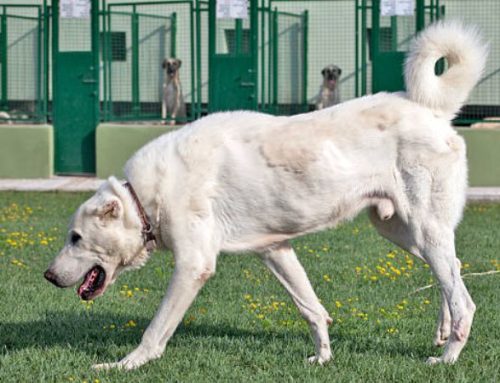The Savannah cat is a stunning blend of wild lineage and domestic charm, bred by crossing the African serval with the household cat. Over several generations—known as F1 through F5—this hybrid has developed a range of sizes, personalities, and physical traits.
In this guide, we’ll take a closer look at the Nexus Pets Savannah Cat Size Guide and what you can expect from a fully grown Savannah at each generation.
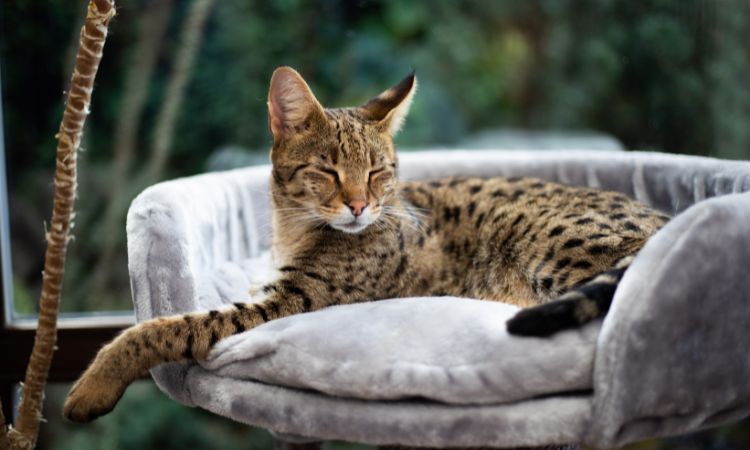
Introduction to the Savannah Cat Breed
The Savannah cat is a hybrid breed created by crossing an African serval (Leptailurus serval) with a domestic cat (Felis catus). This unique combination produces cats that are tall, slim, and strikingly exotic in appearance. They are known for their long legs, large upright ears, long neck, and distinctive spotted coats that echo their wild serval ancestry.
Early-generation Savannahs, particularly F1 and F2 males, can be exceptionally large, sometimes rivaling the size of small dogs, while later generations resemble larger domestic cat breeds such as the Maine Coon or Norwegian Forest Cat. Savannah cats also exhibit playful, loyal, and intelligent behavior, often following their owners around, learning tricks, and even enjoying water—a rare trait among domestic cats.
Understanding Savannah Cat Generations (F1, F2, F3, F4, F5)
Savannah cats are classified by “F-generation” numbers, which indicate how many generations the cat is removed from a wild serval ancestor. For example, an F1 Savannah is the direct offspring of a serval and a domestic cat, while an F5 Savannah is five generations removed from a serval. These generational distinctions are not just labels—they directly influence the cat’s physical characteristics, size, temperament, and even legal ownership in certain regions.
- F1 Savannahs are typically the largest and most exotic in appearance, often weighing between 9.9 and 24.3 pounds (4.5–11 kg), with long legs, large ears, and prominent spotting. Males are usually sterile, while females can be fertile.
- F2 Savannahs carry slightly less serval influence (25–37.5%), retaining many wild traits while becoming slightly more manageable in size and temperament.
- F3 Savannahs have at least one serval great-grandparent (around 12.5–25% serval), showing further domestic traits while maintaining the characteristic appearance.
- F4 and F5 Savannahs are considered “purebred” or “stud book tradition” (SBT) cats, comparable in size to other large domestic breeds, fully fertile, and eligible for championship shows. Their behavior is generally more predictable, and they are more widely accepted for ownership under state and municipal laws.
Generational differences affect not only size and appearance but also behavior and legal restrictions. Earlier generations (F1–F2) can display wild or territorial behaviors, while later generations are usually more suited to domestic life. Understanding these distinctions is essential for prospective owners to ensure they choose the right Savannah cat for their household, lifestyle, and local regulations.
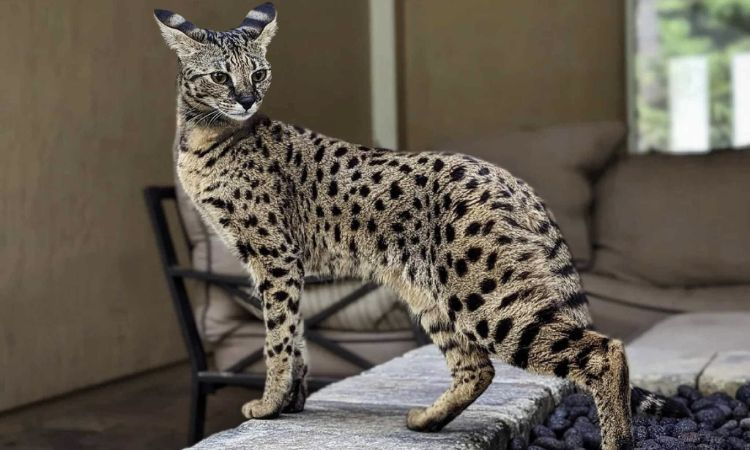
Savannah Cat Size and Growth
Savannah cats are among the most strikingly tall and exotic domestic breeds, and their size is one of the main attractions for potential owners. Understanding their growth patterns and typical measurements helps you prepare for their care and lifestyle needs.
How Big Do Savannah Cats Get?
Savannahs are medium to large cats, with adult sizes varying based on generation, sex, and genetics:
- Weight: Typically 12–25+ pounds, though some can reach 30 pounds
- Height: Usually 10–18 inches at the shoulder, with F1 and F2 generations often the tallest
- Full maturity: Savannahs can take up to 3 years to reach their full size, longer than most domestic cats
Factors Influencing Size
- Generation (F1 to F5 and beyond)
- The closer a Savannah is to its serval ancestor, the larger it tends to be.
- F1 and F2 cats are generally the biggest, while later generations (F3–F5) may be slightly smaller but still taller than most domestic cats.
- Sex
- Males are almost always larger and heavier than females across all generations.
- Genetics and Parentage
- The size of the serval parent and the domestic outcross breed influences adult height and weight.
- Diet and Health
- A balanced diet, regular exercise, and preventive veterinary care play an important role in ensuring a Savannah reaches its full growth potential.
Height vs. Weight Perception
Due to their long legs and lanky frame, Savannahs often look bigger than they weigh. For example, a tall F3 male may appear to weigh 18–22 pounds, but actual measurements may show closer to 14–16 pounds. Their lean build and long necks contribute to this illusion of size.
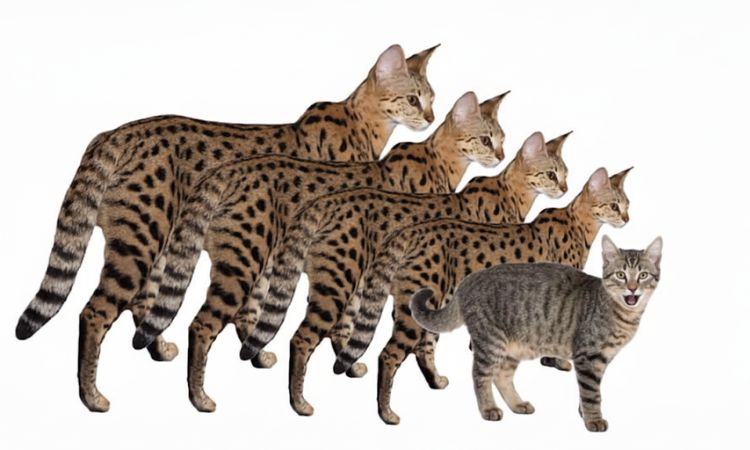
Savannah Size by Generation (Average Measurements)
| Generation | Female Height | Female Weight | Male Height | Male Weight |
| F1 | 16.3 in | 19.38 lbs | 16.5 in | 22.9 lbs |
| F2 | 14 in | 13.29 lbs | 14.83 in | 16.37 lbs |
| F3 | 13.14 in | 12.01 lbs | 14.25 in | 15.5 lbs |
| F4 | 11 in | 9.83 lbs | 11 in | 15.3 lbs |
| F5 | 12.5 in | 10.13 lbs | – | – |
| F6 | 10 in | 13 lbs | 12.61 in | 12.91 lbs |
| F7 | – | – | 12.67 in | 13.97 lbs |
| F8 | – | – | 11 in | 11 lbs |
Tip: Keep in mind that individual cats may vary, and these numbers represent averages.
Savannahs are fast-growing, playful, and agile cats, so providing climbing spaces, toys, and mental stimulation helps support healthy development. Being aware of their size potential is essential for planning your home environment, including tall shelves, secure windows, and safe spaces for exercise.
Distinctive Physical Characteristics
Coat
Savannah cats are instantly recognizable for their exotic, wild-looking coats, which reflect their African Serval ancestry. Their short, slightly coarse fur comes in a variety of striking patterns, including:
- Brown Spotted Tabby
- Silver Spotted Tabby
- Black
- Black Smoke
The spots vary in shape—some are round, others oval—mimicking the natural camouflage of wild cats on the African savanna. This unique patterning gives Savannahs their unmistakable cheetah-like appearance.
Ears
One of the breed’s most prominent features is its large, high-set ears, inherited directly from the Serval. These ears are wide at the base and slightly rounded at the tips, giving Savannah cats excellent hearing and a striking, alert expression. Their ear placement atop the head emphasizes the breed’s triangular head shape.
Body Structure
Savannah cats have a tall, athletic, and graceful build. Key features include:
- Long legs—especially the back legs, which are slightly longer than the front legs, enhancing their extraordinary jumping and climbing abilities
- Slender, muscular body that conveys agility and strength
- Long neck, contributing to their elegant, elongated silhouette
Even later generations, which may be closer in weight to other domestic cats, maintain this impression of height and athleticism.
Facial Markings
Savannahs often display distinctive facial markings, including the classic “tear-duct” lines running from the inner corner of the eyes down toward the sides of the nose. These markings, reminiscent of wild Servals, accentuate their alert, intelligent expression and add to the exotic appeal of the breed.

Key Takeaways and Considerations for Ownership (FAQ)
Is a Savannah Cat Right for Me?
Savannah cats are highly energetic, intelligent, and playful, making them a unique choice compared to most domestic breeds. Before adopting one, consider the following:
- Energy and Exercise Needs: Savannahs require daily physical activity and mental stimulation. They thrive in homes where they can climb, jump, and explore, often enjoying leashed walks or interactive playtime with toys.
- Vertical Space: Their long legs and extraordinary jumping ability mean they need ample vertical space, such as cat trees, shelves, or climbing towers, to remain active and satisfied.
- Social Interaction: These cats do not enjoy being left alone for long periods. They bond closely with their human family and often exhibit dog-like loyalty and playfulness.
- Hunting Instincts: Savannahs retain strong predatory instincts, so they may not be suitable for households with small pets such as birds, hamsters, or fish. Proper supervision and socialization are essential for a harmonious home environment.
Legality Considerations
Savannah cats are classified as hybrid cats, and the ownership of early generations (F1 and F2) is often restricted or regulated:
- Some U.S. states, including Hawaii, Massachusetts, and Georgia, have specific restrictions or bans.
- Cities such as New York City prohibit ownership entirely.
- Internationally, countries like Australia ban Savannahs completely.
Always check your local and state regulations before acquiring a Savannah cat to ensure compliance with hybrid laws.
Savannah Cats vs. Other Large Breeds
Savannahs are often compared to other large, exotic-looking cats such as Maine Coons or Bengals:
- Height and Build: Savannahs typically measure 16 inches at the shoulder and can weigh 12–25+ pounds, giving them a tall, slender, and athletic appearance. Males are generally larger than females.
- Temperament: While Maine Coons are gentle giants and Bengals are energetic, Savannahs combine both playfulness and dog-like loyalty with high intelligence and curiosity.
- Appearance: Savannahs stand out with their long legs, long neck, large ears, spotted coats, and triangular heads, features inherited from their African Serval ancestry.
Measuring Your Savannah Cat
Accurately measuring your Savannah helps track growth and ensures proper nutrition and health management:
- Height: Measure at the shoulder from the floor to the top of the shoulder blade using a flat ruler or measuring tape.
- Length: Measure from the nose to the base of the tail while the cat is relaxed and standing naturally.
- Weight: Use a pet scale for precision. Because Savannahs have a tall, lanky build, they may appear larger than their actual weight, so visual estimation is often misleading.
Understanding these key factors will help ensure that your Savannah cat thrives in a safe, stimulating, and happy environment while keeping both you and your pet satisfied.


